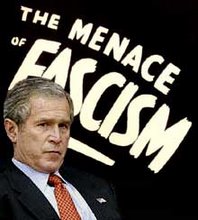ISLAMABAD, Pakistan — Pakistan has begun moving some troops away from its western border with Afghanistan and has stopped soldiers from going on leave amid rising tensions with India, Pakistani officials said Friday.
Two of the officials said the troops were headed to the border with India in the east.
The move is likely to frustrate the United States, which has been pressing Pakistan to battle militants in its lawless northwest territories and working hard to cool tempers in the two nuclear-armed countries, following terrorist attacks in Mumbai, India, last month. Indian officials have blamed a Pakistani militant group for the attacks.
By late Friday there was little to indicate that the troop movements constituted a major redeployment.
One senior Pakistani military official said the decision to move forces and restrict furloughs was made “in view of the prevailing environment,” namely deteriorating relations with India since the terrorist attacks. He added that the air force was “vigilant” and “alert” for the same reason.
With few details being presented, including how many soldiers were involved, it was unclear on Friday whether the troop movements reflected a serious fear of attack or were intended as a warning to India.
Several senior American officials said they had not seen evidence of major troop movements. Still, high-ranking Bush administration officials called Pakistani officials to urge restraint.
A White House spokesman, Gordon D. Johndroe, said, “We don’t want either side to take steps to raise tensions in an already tense situation.”
Since the terrorist attacks, India’s leaders have repeatedly said that they do not want war, but have also expressed frustration with what they have called Pakistan’s unwillingness to curtail militant groups. On Friday, Indian officials refused to comment on the reports of troop movements inside Pakistan.
The situation is complicated by deep divisions within Pakistan about how to deal with Islamic militants, including fighters from Al Qaeda and the Taliban in the northwest who cross into Afghanistan to attack American and NATO troops. Under intense pressure from the United States, the government has sent troops to battle the militants there in recent months, but many Pakistanis resent what they see as American interference.
United States officials have expressed fears over the last month that tensions between India and Pakistan would divert Pakistan’s focus from fighting the militants.
Some of the Pakistani officials who spoke of the redeployment said it was partly a response to new intelligence that suggested India could launch an attack inside Pakistan by early next week. All of them spoke on the condition of anonymity.
One senior Pakistani military official who said troops were being redeployed from the areas where government forces were engaging the Taliban, added that the soldiers who were leaving were “being pulled out of areas where no operations are being conducted,” or where winter weather had limited their ability to maneuver. He called the number of soldiers being moved “limited.”
He and another senior Pakistani military official interviewed Friday about the troop movements chose their words very carefully and offered few details. They said nothing harsh about India, even though they were speaking anonymously.
But two Pakistani intelligence officials — one from military intelligence and one from the country’s premier agency, Inter-Services Intelligence — described the situation in graver terms, and said troops along the border with India were on the highest state of alert.
Another Pakistani official said the air force had been in a “point defense” posture for one week, prepared to defend specific key defense installations and cities — including Islamabad, Rawalpindi and Lahore — as well as the Kahuta nuclear weapons laboratory. Pilots are sleeping in uniform with their boots on, the official said.
Pakistani news media reported troops were being sent near the boundary that separates Pakistani- and Indian-controlled Kashmir, as well to the area surrounding Lahore, Pakistan’s second-largest city, about 20 miles from the border with India.
In public, Pakistani leaders have vowed in recent days not to attack first or be the aggressor in any conflict, but have warned India that it should not believe it can get away with launching even a “surgical” strike inside Pakistan.
“We will be compelled to respond if it happens,” said the Pakistani foreign minister, Shah Mehmood Qureshi, according to Pakistan’s state news agency. “If war is imposed, we will respond to it like a brave, self-respected and self-esteemed nation.”
If the redeployment was meant to warn India, it would stand in contrast to some efforts this month by leaders in each nation to tamp down emotions that some feared could lead to hostilities between the countries, which have fought three wars since 1947.
Two weeks ago, for example, Pakistani officials went out of their way to play down what they said were two incursions by Indian warplanes into Pakistani airspace, calling them inadvertent in public even though some officials privately said the moves were most likely a test or a provocation. Their response to the airspace violations — which the Indian military denied — won praise from American leaders.
Indian and American intelligence officials have attributed the Mumbai attacks, which killed 163 victims, to Lashkar-e-Taiba, a banned group based in Pakistan that has fought Indian forces in Indian-controlled Kashmir for years. But Pakistani leaders say that India has not provided convincing evidence of who carried out the attacks.
For its part, India on Friday accused its neighbor and rival of “diverting attention” from terrorism by making statements in recent days that it would go to war if necessary.
The redeployment came as Indian authorities warned their citizens not to travel to Pakistan, citing news media reports that Indian citizens had been arrested there in connection with a bombing this week in Lahore.
But they took pains not to blame the elected civilian government in Pakistan.
“It seems that this is the work of other agencies in Pakistan that operate outside the law and civilian control,” an Indian Foreign Ministry spokesman said.
The Indian foreign minister, Pranab Mukherjee, met with his counterpart from Saudi Arabia, among Pakistan’s staunchest allies, as part of India’s worldwide diplomatic campaign to put pressure on Pakistan to quash terrorist groups operating on its soil.
“Instead of diverting attention from the real issue, they should concentrate on how to fight against terrorism and bring to book the perpetrators of the Mumbai attack,” Mr. Mukherjee said.
Indian officials have said privately in recent weeks that they are reluctant to strike Pakistan, and that even a limited attack on terrorist training camps would invite swift retaliation. Just as important, any military standoff would only make the Pakistani Army more influential in Islamabad — precisely what India least desires.
(In accordance with Title 17 U.S.C. Section 107, this material is distributed without profit to those who have expressed a prior interest in receiving the included information for research and educational purposes. I.U. has no affiliation whatsoever with the originator of this article nor is I.U endorsed or sponsored by the originator.)
The Nazis, Fascists and Communists were political parties before they became enemies of liberty and mass murderers.



